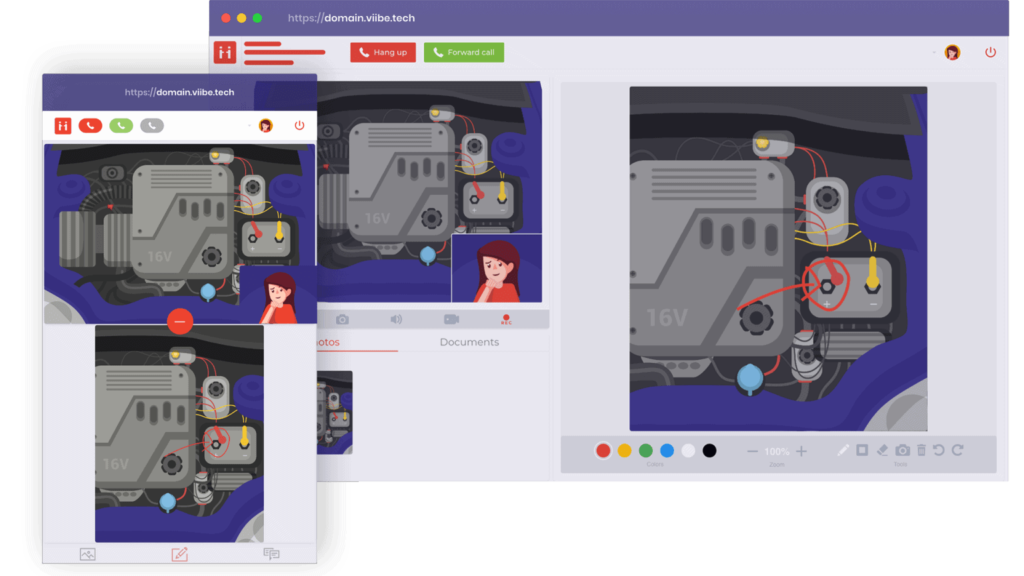
Share this article
Contents
Share this article
Contents
The customer journey comprises various touchpoints, each contributing uniquely to the overall perception of a brand. Among these touchpoints, customer support stands as a pivotal element, wielding a profound influence on shaping customer impressions and impacting the likelihood of a company being recommended.
A positive experience can transform a dissatisfied customer into a loyal advocate. Indeed, for 86% of businesses good customer service turns on-time customers into loyal ones. Conversely, a negative encounter might not only result in lost business but also lead to negative word-of-mouth, impacting the brand’s reputation and market perception.
Overall, the support touchpoint serves as a litmus test for a company’s commitment to customer satisfaction and continuous improvement of its products or services.
However, when encountering a problem, customers may not be willing to contact your customer support. Several factors can influence such behavior. In this article, we will discuss these reasons and how they can be addressed in a way your company increases customer satisfaction levels and gains customers’ trust and loyalty.
Reasons for customers’ reluctancy to contact customer support
1. Ineffective chatbots
Chatbots are a popular solution used to provide immediate assistance to the customers. Most frequently asked questions and their resolutions are fed to the chatbot’s data bank. When the customer contacts it, the bot asks the customer to choose the options corresponding to the encountered issue and provides a solution. However, they may struggle to comprehend nuanced or complex customer queries that deviate from standard patterns, leading to irrelevant or incorrect responses and customers’ frustration.
Customers often seek empathy and personalized interactions. Chatbots, being automated, might come across as impersonal, failing to understand emotions or tailor responses according to the customer’s emotional state.
They might also inadvertently create loops or repeat information, causing customer annoyance when the bot fails to understand the issue or keeps suggesting irrelevant solutions.
2. Failure to reach the hotline
The frustration of encountering a busy hotline when trying to reach customer support is a common and exasperating experience for many customers. Each attempt to contact support and encounter a busy signal consumes valuable time and effort. Customers might need urgent help, and the inability to connect promptly prolongs the resolution process, leading to inconvenience.
As for the company’s reputation, the lack of timely response gives the impression of inadequate resources or insufficient infrastructure to manage customer support demands, undermining the perception of the company’s commitment to customer service excellence. In the end, they might opt for alternative solutions or even consider switching to competitors who offer more accessible and responsive support services.
3. Disconnected levels of support
Customers encounter frustration when they have to repeatedly explain their issues to different support representatives as they are passed from one level to another. This repetition of explanations not only consumes time but also diminishes the customer’s confidence in the support system’s ability to address their concern effectively.
When there is no digital solution that can effectively share data on the customer’s issue, re-explanation prolongs the resolution process, resulting in time wastage for both the customer and the support team.
4. Complicated IVR systems
Interactive Voice Response (IVR) systems are like chatbots but for phone interactions. They are made to navigate customers through automated phone menus by responding to voice prompts or keypad inputs. Such systems often become a significant source of frustration and reluctance to contact customer support. These systems, while intended to streamline call routing and improve efficiency, can be overly complicated, leading to a disconnect between customers and the support they seek.
Customers frequently have to deal with lengthy menus, unclear options, and repetitive prompts, causing frustration and confusion. The inability to swiftly reach a live agent or encountering poor menu design contributes to a negative customer experience, ultimately dissuading them from engaging with customer support, and resulting in a negative perception of the company’s services.
5. Lack of self-service options
Self-service options encompass various tools and resources such as comprehensive FAQs, knowledge bases, troubleshooting guides, and online portals that empower users to independently resolve their issues without the need for direct human interaction.
The absence of a robust self-service infrastructure not only prolongs problem resolution but also limits the flexibility and convenience customers expect in managing their concerns. Providing comprehensive self-service options that are easy to find on the company’s website not only empowers customers to address their issues promptly but also enhances their overall experience by offering quick, convenient, and user-friendly ways to resolve problems on their own terms.
Benefits of remote visual assistance for customer support
Remote visual support solutions can become a valuable asset for your customer support teams if you are looking for a tool that can help your agents boost their efficiency and never miss a customer query.
Oftentimes, important information gets lost between the customer and the level 1 support expert. Constant redirection from one agent to another or the inability of the support agent to consult the history of the customer interaction in the chatbot can postpone assistance and increase the probability of a negative experience. Remote visual assistance tackles these challenges.
Quick escalation of the queries
The button to trigger real-time video calls can be integrated directly into the CRM that support agents are using. Whenever a customer reports a problem, the agent can launch a video call and use a collaborative interface to guide the customer through the resolution. If more advanced assistance is needed, a more experienced agent can join the session, or in case of unavailability, the video recording of the call can be shared with the support team.
The option to get in contact with an expert via a video call can also be integrated into a chatbot, granting customers the ability to get in touch with the right professional.
As a result, rapid expert assistance becomes available at customers’ fingertips.
Safe media files exchange
It is not the news that emails and phone calls are not efficient when it comes to troubleshooting. Whenever you need to send multiple files at once, the email instance will tell you they are too heavy or propose to convert them into a shareable link to Drive. In case of an urgent query, all these “logistic” steps are frustrating and time-consuming.
Such remote visual support solutions like ViiBE allow users to share any media files with no limit in size. They will be stored in the dedicated ticket which makes it easy to search for them. Tagging capabilities facilitate the sorting.
Assistance from the right experts
Companies use ViiBE “call center” feature for support team management. Each “call center” can represent an entity, location, type of customer – anything the company decides to use as a classification for its support agents. Once they are assigned to the “call center”, the company can define their expertise based on the type of queries or the equipment these agents are responsible for. Thanks to this approach, whenever a customer requests assistance, the right agent will be able to provide it. This eliminates the need for customer redirection from one agent to another.
Knowledge management
How can companies use remote visual support tools to create self-service options for customers? We already mentioned FAQs, knowledge banks, and other self-help pages. When creating them, the company usually tries to put itself in the shoes of the customer and list the questions that will most definitely require support. While such logic is useful, there is a risk that a large chunk of questions will be left behind for the following reasons: 1. the company may find them obvious because it already knows its service and therefore, fails to understand that new customers may require help even with the basic settings 2. there is no well-stored and classified data that can give an overview of the most frequent issues.
Video recordings of the support sessions are a goldmine of the self-service content. Based on them, the company can create guides and tutorials, FAQ pages that are relevant and straight to the point, video content, and so on. Each explanation can be backed by a visual that will show both the company’s understanding of the customers’ problem and its level of professionalism. The customers will see that someone else before them was assisted in time which will improve the company’s reputation in their eyes.
Conclusion
Being customer-oriented is not only about creating user-friendly products but also ensuring the after-sales support that customers can receive in case of a problem. Remote visual assistance tools are an equally valuable asset for already established companies that need to maintain a good reputation and for emerging companies that are looking for an affordable solution that can help them address customer queries efficiently. Thanks to them the customers understand that professional assistance can be obtained in a matter of a few clicks and become more trusting.


